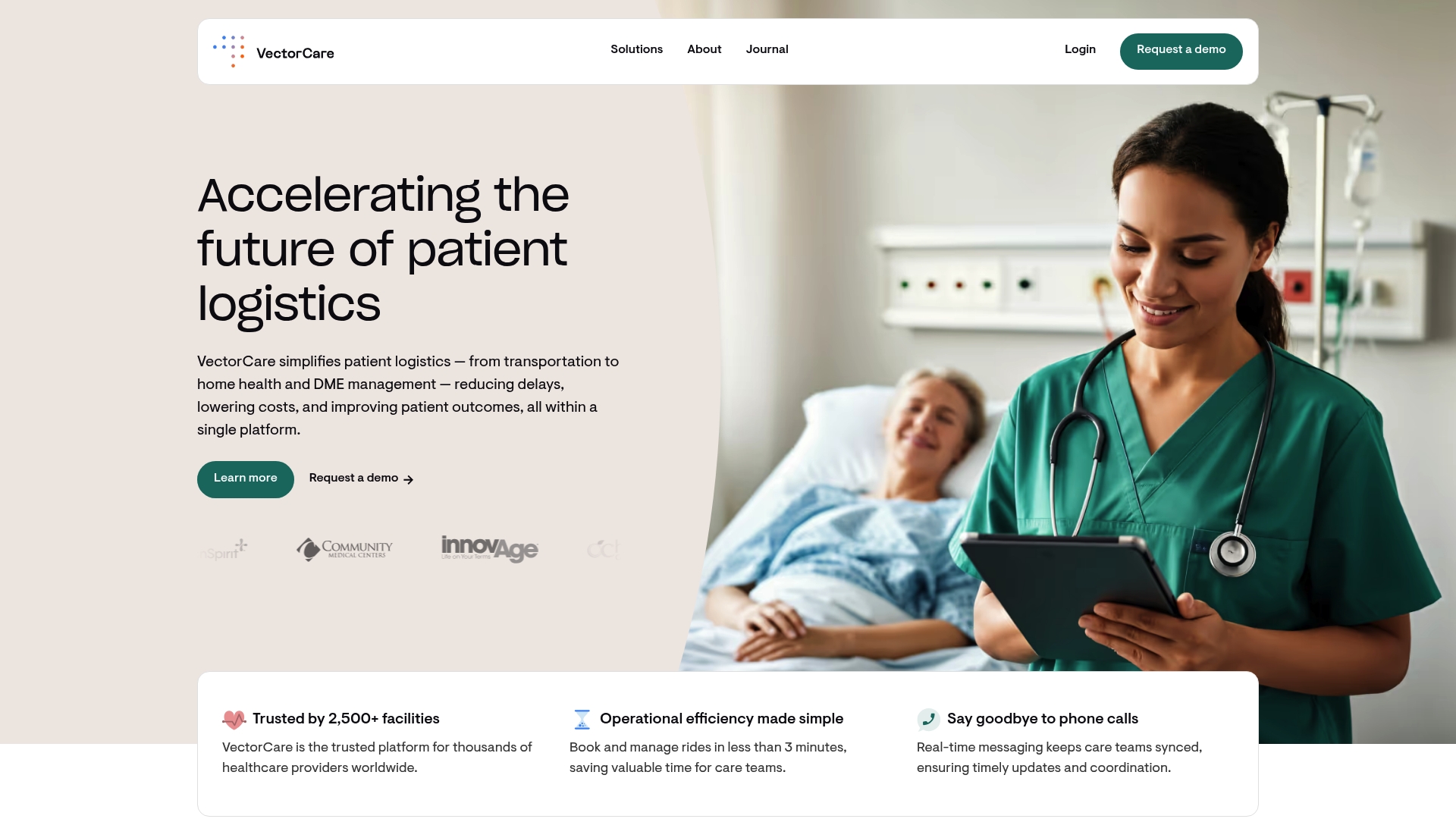7 Key Benefits of Reducing Healthcare Costs

Healthcare costs leave many Americans feeling overwhelmed, and for good reason. Nearly 30 percent of people in the United States delay or avoid medical care because they cannot afford it. You might think finding a solution means cutting corners and lowering the quality of care. The real surprise is that reducing costs often leads to earlier disease detection, better chronic condition management, and more satisfied patients. Cutting expenses can actually make the whole system work better for everyone involved.
Table of Contents
- Improved Patient Access To Affordable Care
- Enhanced Financial Health For Providers
- Increased Operational Efficiency In Healthcare Services
- Expansion Of Preventive Care Initiatives
- Strengthened Patient Satisfaction And Trust
- Greater Investment In Technology And Innovation
- Lower Insurance Premiums For Consumers
Quick Summary
| Takeaway | Explanation |
|---|---|
| Improved affordability enhances patient access | Lower healthcare costs allow more individuals to receive timely medical treatments without financial stress. |
| Cost reduction benefits providers’ financial health | Healthcare organizations can save on administrative expenses and redirect funds towards better patient care and advanced technology. |
| Operational efficiency improves service delivery | Streamlined processes and smart resource allocation lead to better patient outcomes at lower costs. |
| Investment in technology drives healthcare innovation | Strategic savings enable hospitals to embrace digital tools, enhancing care quality and operational workflows. |
| Lower insurance premiums alleviate consumer costs | Reduced healthcare costs can lead to more affordable insurance options, benefiting families financially. |
1: Improved Patient Access to Affordable Care
Reducing healthcare costs plays a crucial role in expanding patient access to essential medical services. When healthcare becomes more financially accessible, more individuals can receive timely and necessary medical treatments without facing overwhelming financial burdens. The direct correlation between reduced costs and improved healthcare accessibility creates a profound impact on community health outcomes.
The financial barrier to healthcare has long been a significant challenge for many Americans. According to Kaiser Family Foundation, approximately 30% of Americans report delaying or avoiding medical treatment due to cost concerns. This statistic underscores the critical need for strategies that make healthcare more affordable and approachable.
Improved affordability can lead to several key patient benefits:
- Earlier disease detection through preventative screenings
- Reduced financial stress related to medical expenses
- Increased likelihood of following comprehensive treatment plans
- Better management of chronic health conditions
Moreover, reducing healthcare costs does not mean compromising quality. Instead, it involves strategic optimization of healthcare delivery systems, eliminating unnecessary administrative expenses, and leveraging technology to streamline processes. Read our guide on transforming patient care logistics to understand how innovative approaches can simultaneously reduce costs and enhance patient experiences.
By making healthcare more financially accessible, we create a more equitable healthcare ecosystem where medical treatment is a right, not a privilege dependent on economic status. This approach not only benefits individual patients but also contributes to broader public health improvements by ensuring more consistent and comprehensive medical care across diverse socioeconomic groups.
2: Enhanced Financial Health for Providers
Healthcare providers face significant financial challenges that can be mitigated through strategic cost reduction approaches. The economic landscape of medical services demands innovative solutions that simultaneously improve operational efficiency and financial sustainability. Reducing healthcare costs presents a critical opportunity for providers to strengthen their financial foundation and reinvest resources into patient care.
According to American Hospital Association, hospitals and healthcare systems spend substantial resources on administrative overhead and inefficient processes. These expenditures can dramatically impact an organization’s bottom line, creating financial strain that ultimately affects patient services.
Key financial benefits for providers include:
- Decreased administrative expenses
- Improved resource allocation
- Enhanced operational efficiency
- Potential for increased investment in advanced medical technologies
- Reduction in unnecessary medical procedures
Healthcare organizations can achieve significant financial improvements by implementing comprehensive cost management strategies. Explore our guide on technology-driven strategies to improve Medicare ratings, which demonstrates how innovative approaches can simultaneously reduce costs and enhance performance metrics.
Moreover, cost reduction is not just about cutting expenses but strategically reallocating resources. By minimizing financial waste, providers can redirect funds towards critical areas such as staff training, advanced medical equipment, research initiatives, and patient care improvements. This approach transforms cost reduction from a restrictive measure into a proactive strategy for organizational growth and enhanced healthcare delivery.
3: Increased Operational Efficiency in Healthcare Services
Operational efficiency represents a critical pathway for healthcare organizations to optimize resources, reduce waste, and deliver superior patient care. Reducing healthcare costs directly translates into more streamlined and effective service delivery, enabling providers to focus on what matters most: patient outcomes.
According to McKinsey & Company, healthcare organizations can achieve substantial improvements by implementing strategic operational efficiency measures. The potential for transformative change lies in leveraging technology, restructuring administrative processes, and eliminating redundant workflows.
Key areas of operational improvement include:
- Automated patient scheduling systems
- Integrated electronic health record management
- Predictive analytics for resource allocation
- Streamlined billing and claims processing
- Reduced administrative overhead
Digital transformation plays a pivotal role in enhancing operational capabilities. Explore how technology can empower healthcare professionals to understand the comprehensive potential of innovative solutions in healthcare management.
By focusing on operational efficiency, healthcare organizations can create a more responsive, agile, and cost-effective environment. This approach not only reduces financial strain but also improves the overall quality of healthcare delivery. Efficiency is not about doing less, but about doing more with less—maximizing resources, minimizing waste, and creating a more sustainable healthcare ecosystem that benefits both providers and patients.
4: Expansion of Preventive Care Initiatives
Reducing healthcare costs creates a transformative opportunity to prioritize preventive care, shifting healthcare paradigms from reactive treatment to proactive health management. By allocating resources more strategically, healthcare systems can invest in early intervention strategies that ultimately reduce long-term medical expenses and improve overall population health.
According to Centers for Disease Control and Prevention, chronic diseases account for 90% of healthcare spending in the United States, with many conditions being preventable through early detection and lifestyle interventions. This stark statistic underscores the critical importance of expanding preventive care initiatives.
Key preventive care strategies include:
- Regular health screenings and diagnostic tests
- Comprehensive patient education programs
- Targeted wellness interventions
- Early risk factor identification
- Personalized health management plans
Technological advancements and data-driven approaches are revolutionizing preventive care strategies. Learn more about tools to improve patient outcomes and understand how innovative solutions can transform healthcare delivery.
Preventive care initiatives not only reduce individual healthcare costs but also contribute to broader public health improvements. By identifying and addressing health risks before they escalate, healthcare providers can significantly decrease the financial burden associated with treating advanced chronic conditions. This approach represents a fundamental shift from a disease-centric model to a wellness-oriented healthcare ecosystem, ultimately benefiting patients, providers, and the entire healthcare infrastructure.
5: Strengthened Patient Satisfaction and Trust
Reducing healthcare costs directly correlates with improving patient experiences by alleviating financial burdens and creating more transparent, accessible healthcare environments. When patients feel their economic concerns are addressed, their trust in healthcare systems significantly increases, fostering a more positive and collaborative medical relationship.
According to Press Ganey, patient satisfaction is not merely about medical outcomes but encompasses the entire healthcare journey, including financial interactions and perceived value of services. Cost reduction strategies that prioritize patient-centric approaches can dramatically enhance overall trust and engagement.
Critical factors in building patient satisfaction include:
- Transparent pricing and billing practices
- Reduced financial stress
- More personalized care experiences
- Increased access to affordable treatment options
- Simplified administrative processes
Explore how non-emergency medical transport impacts patient satisfaction scores to understand the comprehensive ways cost reduction influences patient perceptions.
By implementing strategic cost management approaches, healthcare providers can demonstrate a genuine commitment to patient well-being. This goes beyond mere financial transactions, representing a holistic approach to healthcare delivery that recognizes patients as partners in their medical journey. The result is a more empowered, confident patient population that feels genuinely supported by their healthcare providers, leading to improved communication, better treatment adherence, and ultimately, more positive health outcomes.
6: Greater Investment in Technology and Innovation
Reducing healthcare costs creates a strategic opportunity for transformative technological investments, enabling healthcare organizations to leverage cutting-edge solutions that fundamentally reimagine medical service delivery. By reallocating financial resources from inefficient traditional systems, providers can unlock unprecedented potential for digital innovation and advanced healthcare technologies.
According to Deloitte, digital health technologies have the potential to save the healthcare industry substantial operational expenses while dramatically improving patient care quality and accessibility. The convergence of cost reduction and technological innovation represents a critical paradigm shift in modern healthcare management.
Key technological investment areas include:
- Artificial intelligence diagnostic tools
- Advanced telemedicine platforms
- Predictive analytics systems
- Integrated electronic health record technologies
- Machine learning-enhanced treatment protocols
Explore how technology can empower healthcare professionals to understand the transformative potential of strategic technological investments.
Technological innovation goes beyond mere cost savings. It represents a fundamental reimagining of healthcare delivery, creating more personalized, efficient, and responsive medical ecosystems. By strategically reducing operational expenses and redirecting resources toward advanced technologies, healthcare providers can develop solutions that not only minimize costs but also dramatically enhance diagnostic accuracy, treatment effectiveness, and overall patient experiences.
7: Lower Insurance Premiums for Consumers
Reducing healthcare costs creates a direct pathway to more affordable insurance premiums, benefiting consumers by alleviating the financial strain associated with healthcare coverage. When healthcare systems operate more efficiently, insurance providers can adjust their pricing models to reflect reduced operational expenses and improved care delivery.
According to Kaiser Family Foundation, healthcare premium increases have consistently outpaced wage growth, creating significant economic pressure for American families. Strategic cost reduction initiatives can help break this challenging cycle of escalating healthcare expenses.
Key factors contributing to potential premium reductions include:
- Decreased administrative overhead
- More efficient medical service delivery
- Reduced frequency of expensive medical interventions
- Improved preventive care strategies
- Enhanced technological efficiency
Read our insights on Medicare rating improvements to understand how systemic improvements can lead to more affordable healthcare coverage.
The potential for lower insurance premiums extends beyond individual financial relief. It represents a fundamental restructuring of healthcare economics, creating a more sustainable and accessible system that benefits consumers, providers, and insurance companies alike. By focusing on comprehensive cost reduction strategies, we can develop a healthcare ecosystem that prioritizes both financial efficiency and high-quality medical care.
The table below provides a comprehensive summary of the seven key benefits of reducing healthcare costs as discussed in the article.
| Benefit | Description | Impact on Patients and Providers |
|---|---|---|
| Improved Patient Access to Affordable Care | Lower costs remove financial barriers, enabling timely and necessary medical treatment | Earlier disease detection, better chronic care, less financial stress |
| Enhanced Financial Health for Providers | Cost reductions save on administrative expenses and improve resource allocation | Allows reinvestment in patient care, technology, and staff development |
| Increased Operational Efficiency | Streamlined processes and digital tools boost efficiency in service delivery | Quicker, higher-quality care with less waste and administrative burden |
| Expansion of Preventive Care Initiatives | Savings allow for greater investment in preventive health strategies | Reduced chronic disease incidence, long-term savings, healthier populations |
| Strengthened Patient Satisfaction and Trust | Lower costs increase transparency and reduce patient financial anxiety | Improved trust, better engagement, more positive healthcare experiences |
| Greater Investment in Technology & Innovation | Savings enable adoption of digital health solutions and cutting-edge tools | More accurate diagnoses, improved care quality, and operational enhancements |
| Lower Insurance Premiums for Consumers | Reduced systemic costs support affordable insurance options | Less financial burden on families, greater access to required health coverage |
Take Control of Healthcare Costs and Improve Patient Access
Are high administrative costs and logistics delays holding your organization back from truly affordable, accessible healthcare? This article explained how reducing healthcare costs leads to better patient access, operational efficiency, and satisfaction. If you are ready to overcome the barriers of outdated workflows and expensive manual processes, you need a smart solution that brings these benefits to life.

Discover how VectorCare can help you eliminate unnecessary expenses while improving logistics across patient transport, home health, and equipment delivery. Our platform uses automation, real-time updates, and data insights to cut waste and boost patient satisfaction. Experience firsthand what smarter scheduling and seamless communication can do for your organization. Take the next step—visit VectorCare’s digital platform and see how easy it is to achieve lower costs and better care today.
Frequently Asked Questions
What are the benefits of reducing healthcare costs?
Reducing healthcare costs improves patient access to necessary medical services, enhances financial health for providers, increases operational efficiency, and allows for greater investment in technology and innovation, ultimately leading to better patient outcomes.
How does reducing healthcare costs impact patient satisfaction?
Lower healthcare costs alleviate financial burdens for patients, promote transparency in pricing, and improve overall patient experiences, which increases trust and engagement in the healthcare system.
In what ways can healthcare providers reduce operational costs?
Providers can reduce operational costs by implementing strategic cost management strategies, optimizing administrative processes, leveraging technology, and minimizing unnecessary medical procedures.
Why is preventive care important in the context of reducing healthcare costs?
Preventive care is crucial as it helps identify health risks early, reducing the need for expensive treatments later. Investing in preventive initiatives can lead to long-term savings and improved population health.



